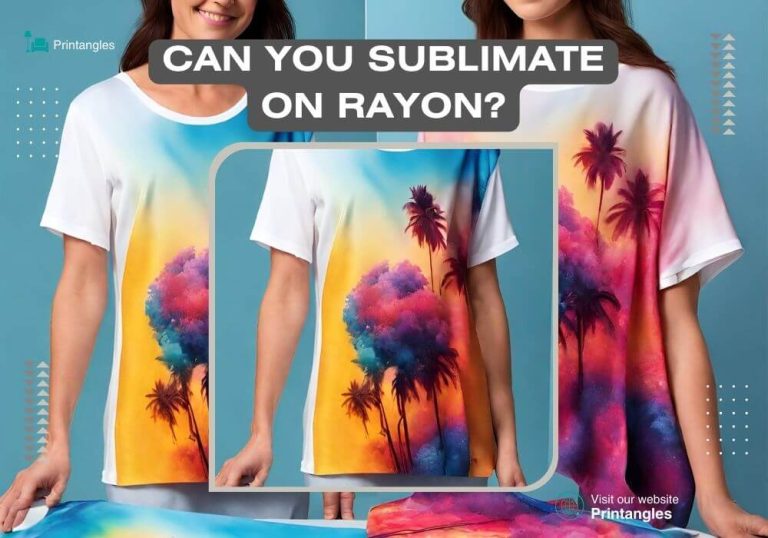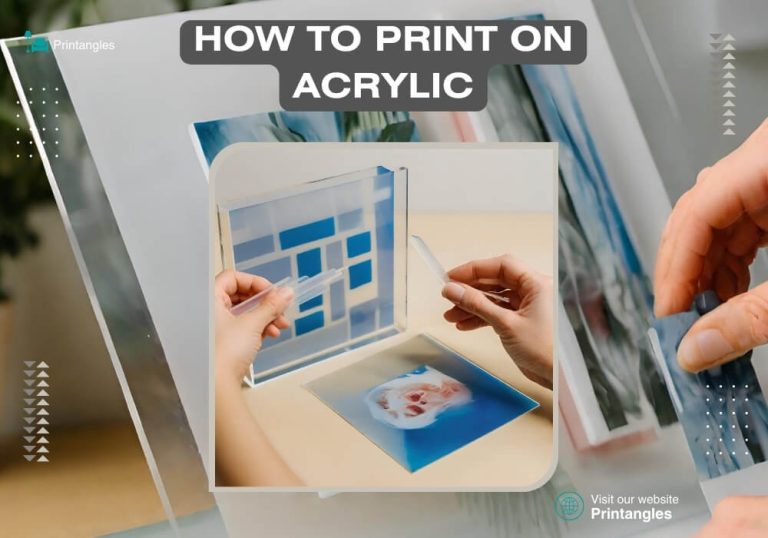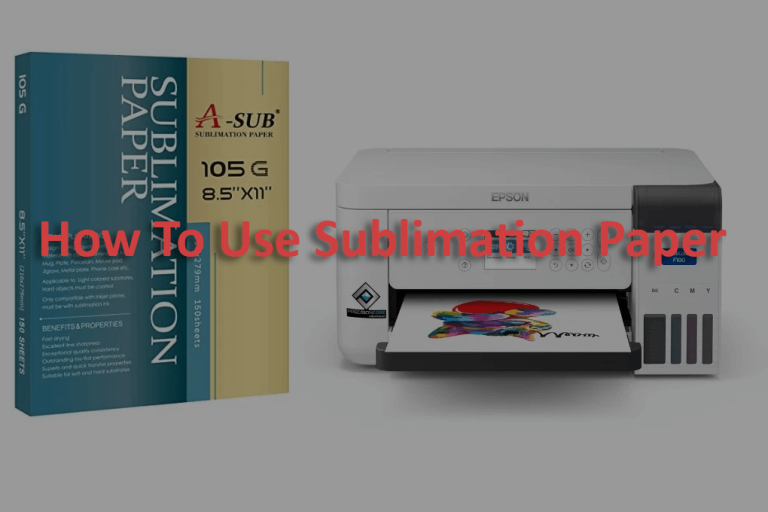How to Sublimate A Shirt
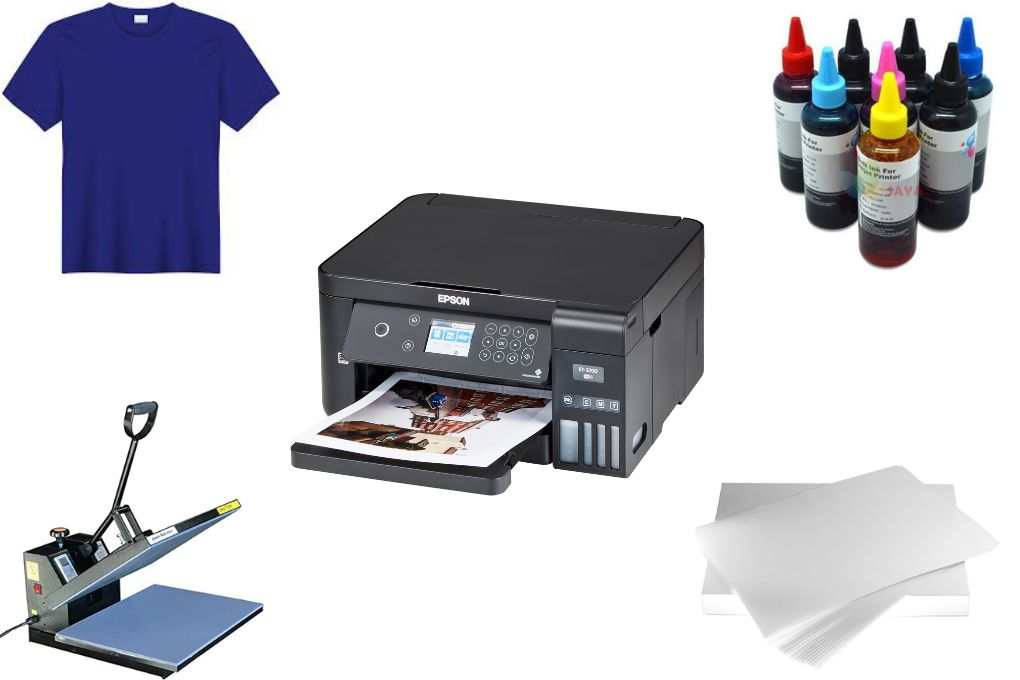
Shirt sublimation is becoming extremely prevalent, and it’s proving to be worthwhile! Are you considering different ways to beautify your clothes? Sublimation shirts are an excellent solution. Understanding how to make sublimation shirts is among the best methods to begin manufacturing personalized t-shirts fast and economically.
Try switching to sublimation print shirts when each of your beloved t-shirts appears worn out with damaged or worn graphics. Designs made with this unique printing technique are intricate as well as durable. Let us learn how to carry out sublimation on shirts.
Below you will learn about how to sublimate a shirt. Moreover, it will teach you how to make your customized sublimation print on any t-shirt. The essentials needed for sublimation will be revealed in this article, along with a step-by-step tutorial on how to sublimate shirts – the easy way!
You may Also Like: Sublimation and Screen Printing Which one is better? layers and sublimation
Table of Contents
- Quick Material Checklist For Sublimating A T-Shirt
- What kind of fabric is best for sublimation?
- Choosing the Best T-Shirt for Sublimation Printing
- How to Sublimate A Shirt (Step by Step)
- How to Sublimate on Dark Colors
- Do The Fabrics Have To Be 100% Polyester?
- Cotton Sublimation
- Tips For Sublimation on Shirts
- FAQs
- Conclusion
Quick Material Checklist For Sublimating A T-Shirt

There are some materials that you’ll need, nevertheless they’re quite simple to use and easy to begin with. Below is the list:
Detailed Supply List For Sublimation
Sublimation t-shirts require specific equipment, including dyes, sublimation printers along with transfer paper. Certainly, you will need certain materials, however, they are easily accessible and precise to use.
Let’s discuss the exact essentials you’ll be required to begin with sublimation printing, along with the reasons you need them for!
Sublimation Printer
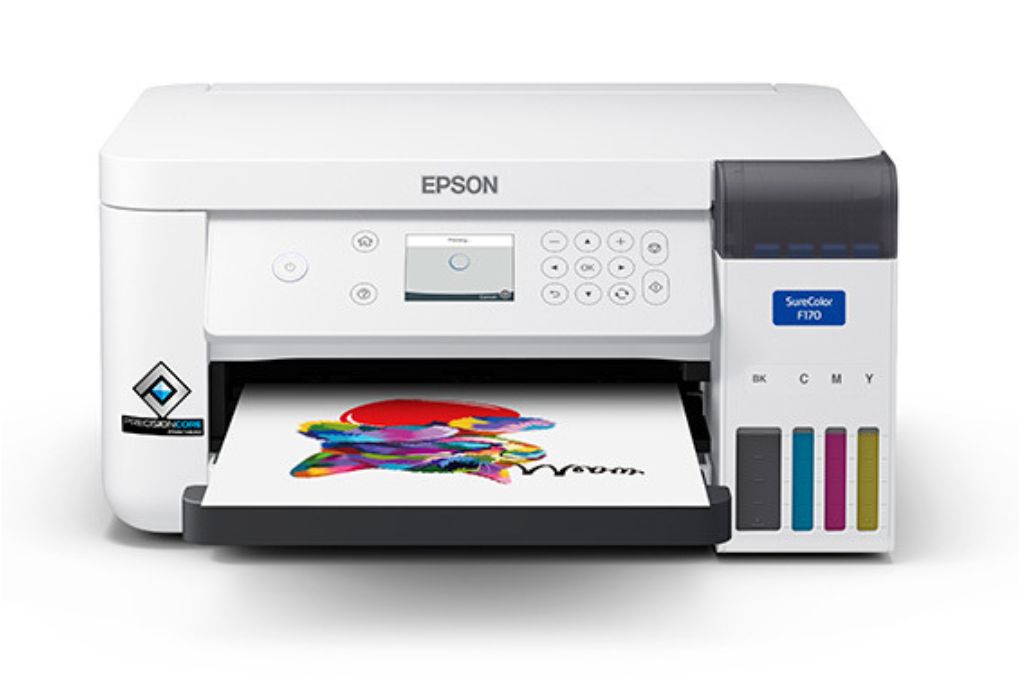
To begin, the basic requirement for any sublimation printing task is a sublimation ready printer! Based on your interest in technology, you can also turn a standard inkjet printer into something like a ready T-shirt sublimation printer. Since this technique becomes rather complicated for the amateur, most artists choose to use a printer made specifically for use with sublimation dyes.
Related: Best Heat Transfer Sublimating Printers, Best Beginner Printers, how to use flatten on cricut design space
Sublimation Ink
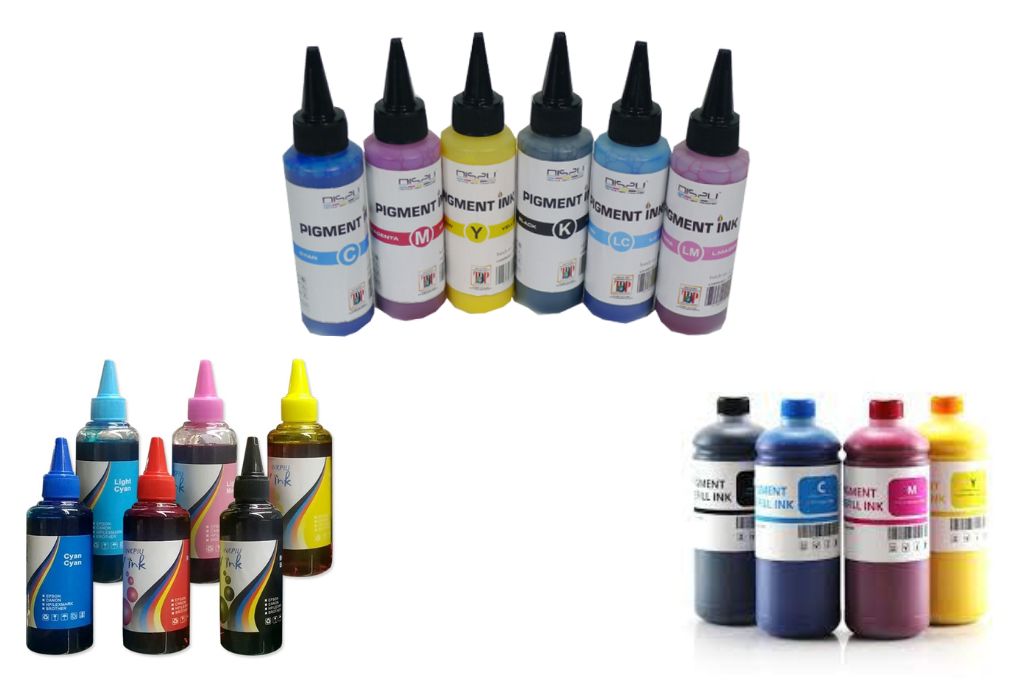
It is essential to understand that when performing sublimation, one will need to use special sublimation ink. Users shouldn’t go for the ink that came with the inkjet printer. Moreover, one should avoid using the inkjet ink inside the printer that he wishes to utilize for sublimation.
Heat Press

To create sublimation prints on shirts, you need a heat press. No, a simple iron or ironing board cannot work on this task as other sorts of home printing. However, you may employ a smaller press such as the CricutEasyPress in the case that you simply like to create small sublimation patterns. There are numerous sizes of heat presses, so be sure to choose the one that has a heat plate sufficient to accommodate the styles you wish to execute.
Transfer Paper
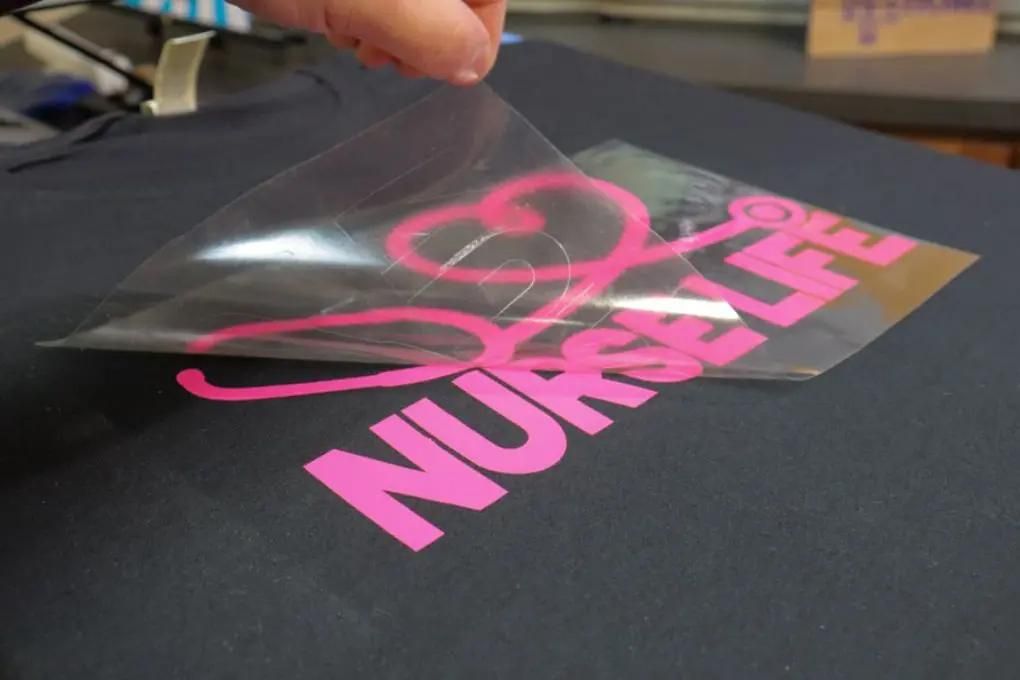
Additionally, users require transfer paper that has been treated with chemicals to aid in the dye molecules dissipating into a vapor. Ideally, one should choose a reasonably sturdy material that doesn’t crease readily. One of the most important aspects to understand regarding the sublimation transfer paper is how one is unable to use standard heat press paper – and he must use sublimated transfer sheet!
Dye Refills
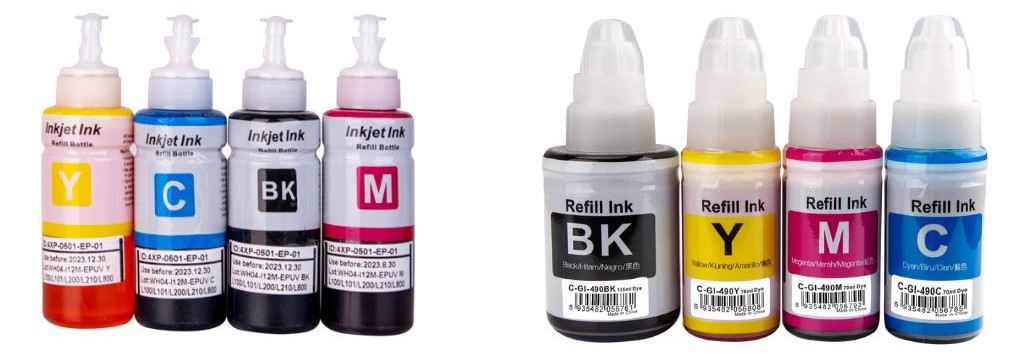
After you’ve started the procedure, you’ll need dye refilling. The digital core colors of cyan, yellow, magenta, as well as black are used by most sublimation printers, and refills are rather affordable!
Design Software

Generating some exclusive designs is certainly what you should do if you wish to start a t-shirt brand. To generate graphics and designs for printing, you may require design software. You’ll have to be proficient in a program for digital design, namely Inkscape or Adobe Illustrator to carry out your plan successfully.
Designs
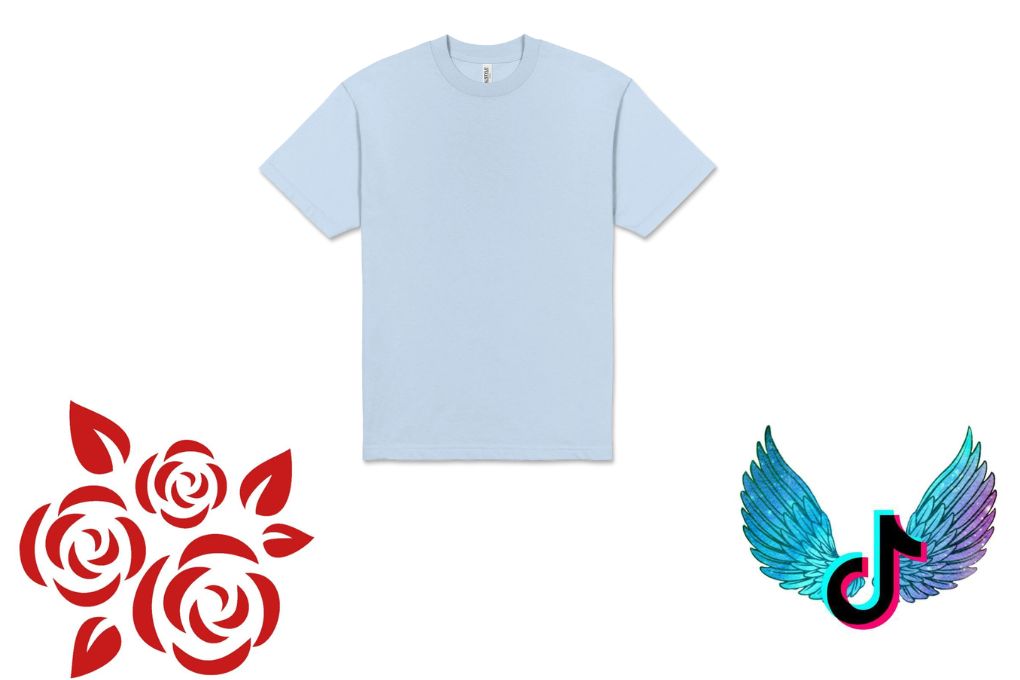
The software applications allow you to generate your own content and designs, which is great, however you can simply purchase designs that have previously been created for businesses like yours. Among the best locations to acquire designs are Etsy, Design Bundles, and Creative Fabrica.
Fabric

It is understandable that you definitely also require shirts to print and carry out the sublimation, but that’s not the only thing! Do a deep analysis when deciding what shirts to use for sublimation. For beginners, you may take into consideration that sublimation printing is best suited to 100% polyester garments.
Butcher Paper

Butcher paper serves the purpose of lining the space between the t-shirt as well as the heat plate, preventing the dyes from being pushed onto the shirt’s back while also shielding it from the heat plate. To make a cost-effective purchase of a large roll of butcher paper, one can consider Amazon.
Lint Roller
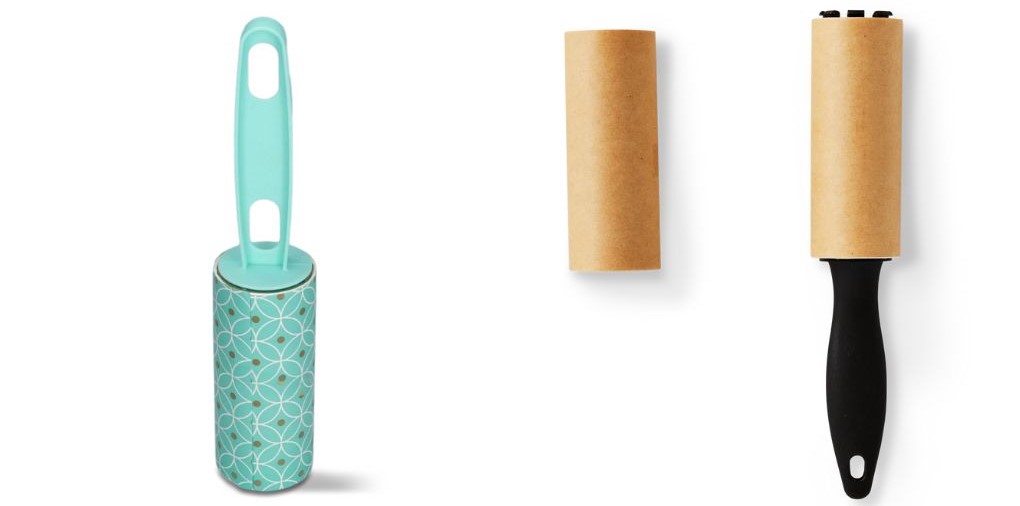
Residue and dirt can accumulate on T-shirts and certain other textiles. A simple five second lint roll may help ensure the design is as sharp and top quality as achievable.
What kind of fabric is best for sublimation?
There are essentially three types of material that may be used to create a printed T-shirt and they include; cotton, blended fabric, and polyester:
Cotton

Cotton is available in three varieties: regular, ringspun, and processed. Most of them are manufactured from vegetable fibers processed to form yarn and then sewn into cloth. Cotton, however, is not an ideal choice for sublimation since the technique does not perform very well in synthetic materials.
Blended

Blended materials are typically 25% rayon, 25% polyester and 50% cotton. Given their significant cotton content, blended materials serve as a bad buy for sublimation. Furthermore, the procedure does not function effectively with this medium.
Polyester

Polyester is a synthetic polymer that is commonly used to designate polyethylene terephthalate (PET). It is ideal for transfer since the dye works wonders on synthetic materials.
Read More: Sublimation printing and personalized gifts, successful sublimation tips & tricks, How to make a sublimation mug wrap?
Choosing the Best T-Shirt for Sublimation Printing
A polyester shirt is ideal with sublimation, but the question arises that exactly what kind of sublimation shirt?
How to Sublimate A Shirt (Step by Step)
So, let’s start to sublimate shirts with each step in detail:
Step #1: Generate the Desired Design on the Design Program
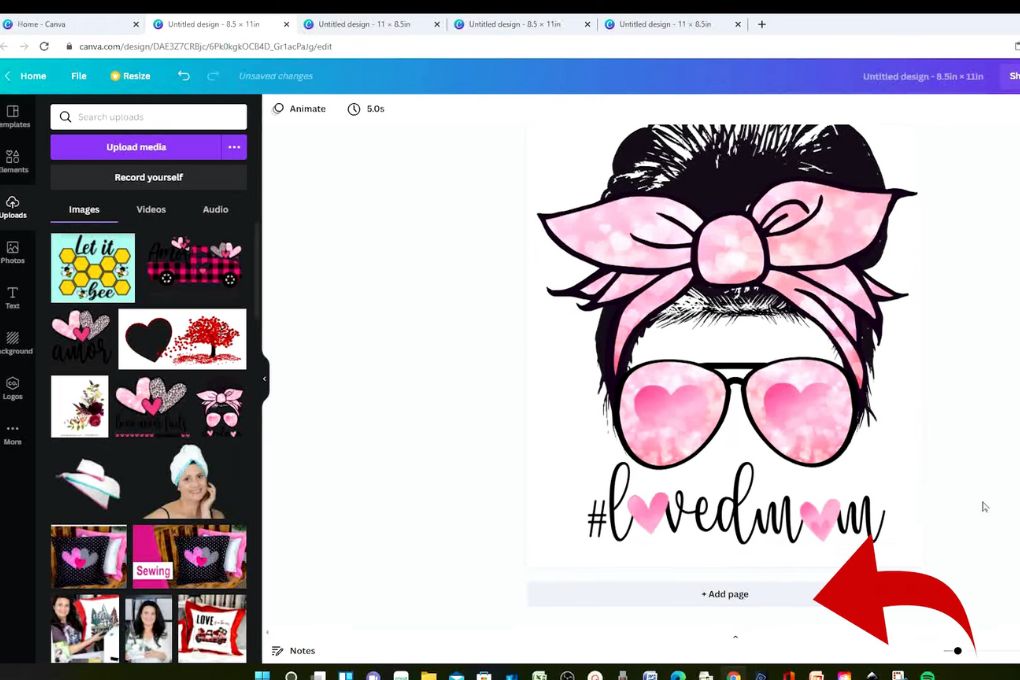
Besides purchasing designs that have already been developed for you, you may also generate your own original text and designs catering to your business ideas. To adjust the design, choose the image, now drag by clicking to a corner until it attains the correct size for the web page.
Alternatively, you may right-click on the picture, choose the Photo Options then click on “size and rotation,” to alter its size within areas. Furthermore, the next thing to ensure is that the graphic will be printed at the exact location as desired. Choose the picture but then just select “Wrap text” out of the option shown below to move it.
For the menu to appear, you may need to drag your mouse over the image’s bottom. The picture has become clickable or draggable to just about any location on the website. It is best to place the image in the center of the document such that it is not chopped away from the corners and that there is enough area to fluff the edges for something like a clean press.
When you’re satisfied with the framework, title it by selecting in which it says “Untitled” in the upper left area. One further resourceful feature of Google Docs is its auto-saving option!
Step #2: Prepare Your Print For Sublimation
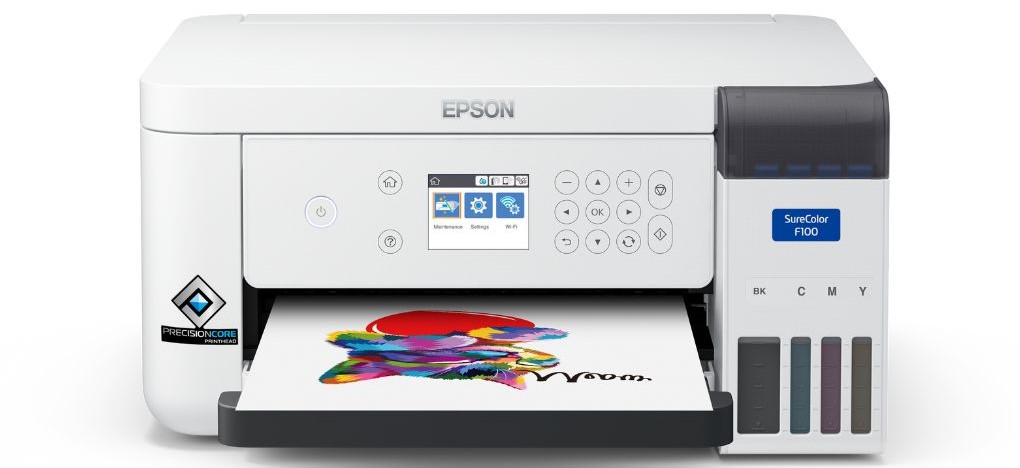
Check that the material is of a high level of quality and properly loaded before sublimation printing. Examine the printer’s instructions and the paper package for information on which sides to produce the print on and the procedure for inserting it.
Inside an Eco Tank, lay an A-SUB sheet facedown only with the letters “A-SUB” exposed for the image to print upon the brighter white face of the targeted sublimation sheet.
To prevent any patterns on the margins from shifting to the material, cut the sheet closely toward the pattern. Its margins may also be carefully torn to soften the transition. Additionally, cutting removes any unwanted sublimated ink lines that could have slipped over onto the surface of the paper without being noticed.
Read More: Best Mug Sublimation Printers, Sublimation isnt transferring, types of sublimation, permanent vs removable vinyl, ideas for sublimation printing
Step #3: Preparing the Shirt – Lint roll
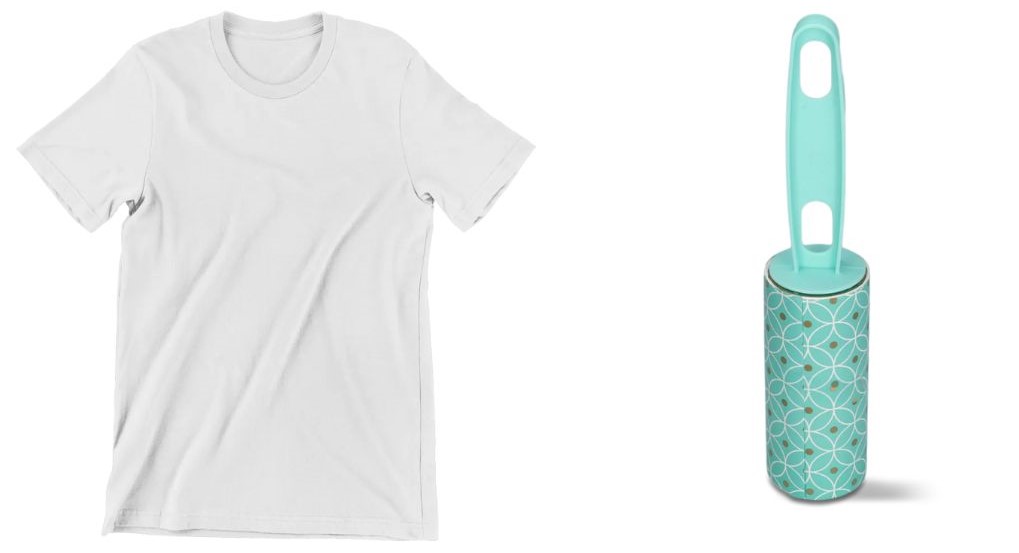
The most essential aspects that must be ensured are what type of shirts for sublimation or print accuracy, even though printer parameters differ. Pick a good light-hued polyester shirt for sublimation on colored shirts then organize the sublimation shirt designs.
Prewashing the clothing is optional if you prefer to do it then you can. Lint rolls your cloth and eliminates whatever dirt or fuzz that may have sublimated onto the fabric, causing weird spots and markings.
Press the shirt anywhere across the wrinkles every ten seconds after folding this in half lengthwise. You can see the midline as you unfold it. It also functions like a pre-heat, eliminating humidity and facilitating proper transmission. Preheating is essential for achieving a great sublimation outcome!
Lay the shirt facing up on that pressing platform after unfolding it. Insert a sheet of white cardboard within the shirt along the design. By doing this, one may stop sublimation ink from possibly bleeding through to the rear of the clothing as well as the pressing mat.
Before printing, mirror your sublimation t-shirt pattern. Next, for tees employing sublimation inks, choose a sublimation printer or an inkjet printer for sublimation to produce the design upon the brighter surface of the sublimation sheet. Allow the picture to rest before reheating the cloth to eliminate creases and humidity.
Step #4: Heat Press
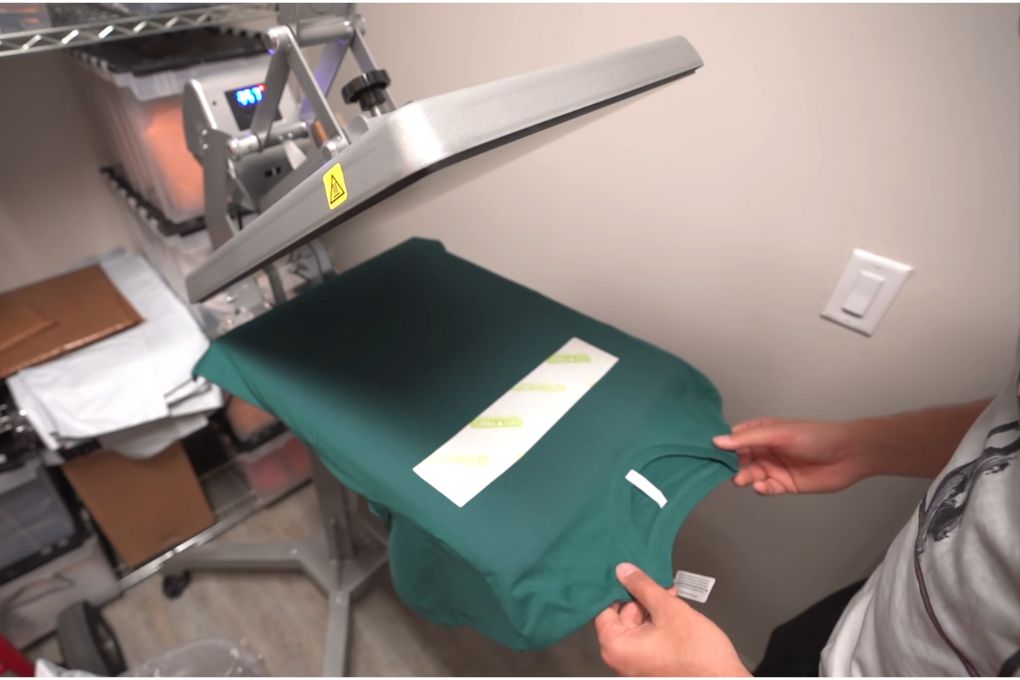
Set your heat press to the desired temperature, regulate the pressing duration and intensity, position your printed design so that it faces the cloth, and begin the pressing procedure.
Preheat the heat press to either a temperature of 385°F or 400°F (196°C to 204°C) to generate heat. Normally, you have between 45 and 60 seconds to press the cloth. Start with forty-five seconds, if you are unsure what to choose.
When working with a new dress or shirt, considerable experimenting is expected. You may push harder when the transfer appears to fade off and uninteresting. You prolonged pressing if the transfer seems to have a yellowish brown tint.
You may use a regular heat press or even a Cricut EasyPress. A domestic iron, on the other hand, will not become sufficiently hot. To create comfortably, open the windows and then put on the window as the sublimation generates fumes.
Once you finish employing the Auto press, it shall simply open automatically. Raise the EasyPress straight up off the shirt when you are utilizing it. Be cautious, since the pressing region and supplies are still going to be hot. Users may take off from the butcher paper however keep the t-shirt further to rest. Since the sublimation process can take 10-15 seconds, touching the cloth instantly may cause the design to fade.
Step #5: Prepare Teflon Sheet
Teflon sheets are required mostly on the pressing surface’s base as well as in space around the article and also on the heating surface that goes over the rear of the garment. Place the cloth upon that Teflon sheet of such heat press then transfer your desired printable sublimation image to the t-shirt.
Step #6: Placing the Butcher Paper
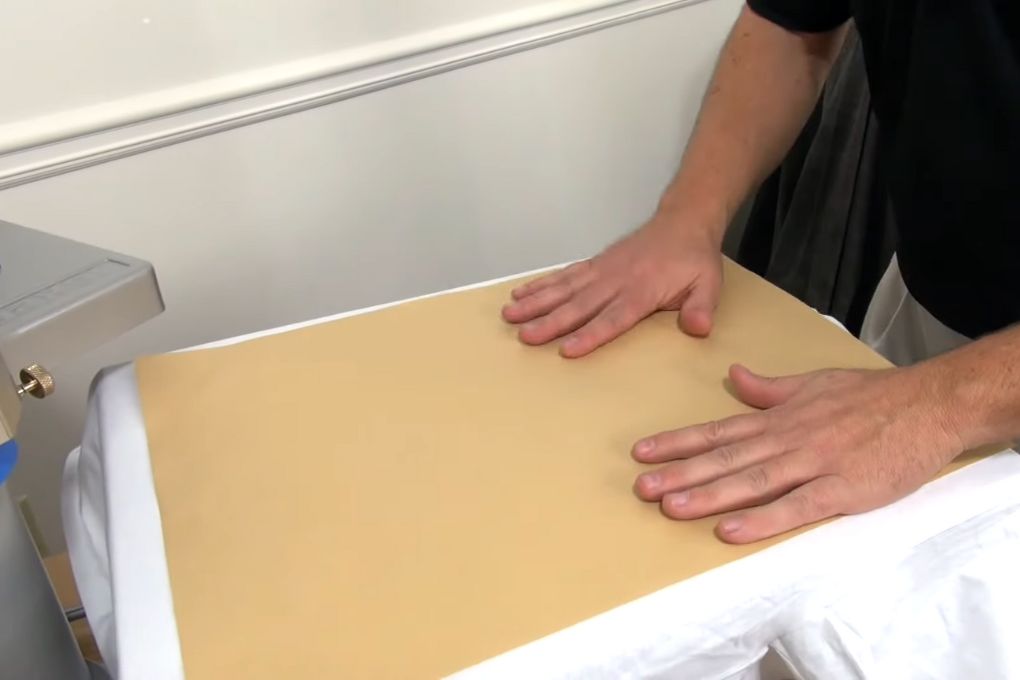
Over the t-shirt, lay a sheet of white butcher paper that is uncoated and bigger as compared to the heating surface. Wax paper, parchment paper, or freezer paper should not be used since they hold humidity and therefore can cause blurry transfers. Additionally, it is advised to not use colored butcher sheets since these often contain dye, which may stain the clothing.
Step #7: Take out the heat press, then remove the transfer paper
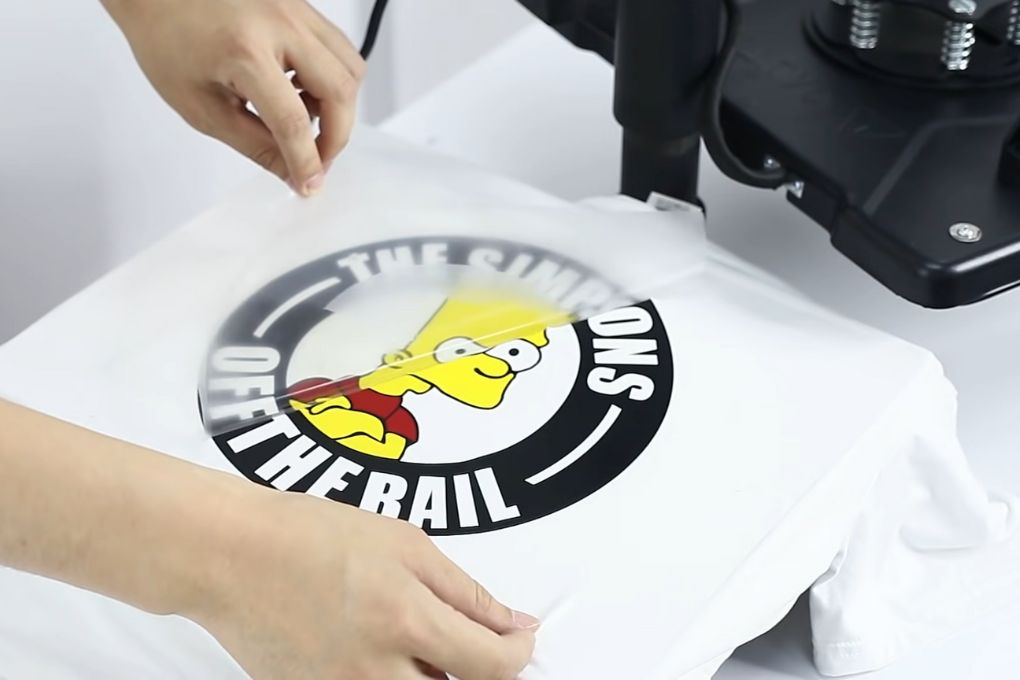
Once you are certain that the clothing is dried sufficiently, pull it from the heat press then discard the tape and sheet. Similar to how you would fold a garment, carefully flatten the front and back of the printed artwork. However, make sure that none of the printed pictures should be folded through during the folding!
Using the pre-heated cloth like a guide, gently press the pattern into it with the ink side facing down. To hold the pattern intact and avoid fading or fuzziness, apply heat-resistant adhesive to each of the four corners. This is everything that is necessary to sublimate a shirt the right way. It is achievable for anyone since it’s so easy!
How to Sublimate on Dark Colors
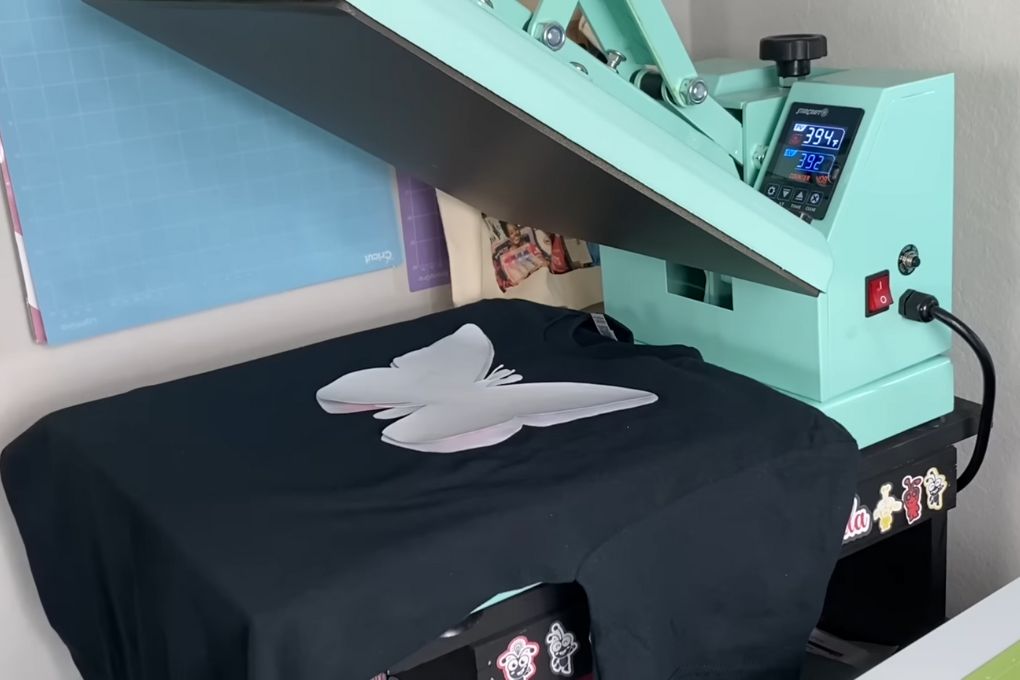
Although there’s no direct way to utilize sublimation printing on a black or dark-colored cloth, one may understand how to sublimate on a black shirt through vinyl sheets.
Nearly every stage in this technique is similar to what is in a standard sublimation printing procedure. The primary distinction is the fact that the image will be printed straight on a unique sublimation heat transfer vinyl. The HTV will then be attached to the cloth using the heat press, which will also sublimate the pattern into it.
1. As stated in the article’s prior instructions, set up the design and shirt. The only variation is that this time, since you’ll be printing directly upon the HTV, so you wouldn’t like to mirror the picture before printing.
2. To ensure that perhaps the ink is applied towards the dull and simple side of the sublimation HTV vinyl sheet, place this into the printer having the bland side up. There is a glossy peel-away paper on the rear that you’ll subsequently discard.
3. HTV which is specifically designed for sublimation and includes polyester is required for this purpose because otherwise, whenever the dye is heated, the chemical bonding procedure won’t be successful.
4. Using a Cricut or scissors for trimming away extra vinyl from the pattern could be appropriate, based on that design’s style. In the case of a print that is shaped like a cat, for example, you might wish to totally eliminate the vinyl from the area all around the cat form.
5. Remove the glossy back of the HTV and apply it to the shirt. Put on the Teflon layer of protection, and press with a heat press for about 15 seconds at 360°F.
The simplest method for sublimation printing onto the black cloth is typically this one. The alternative approach would be to print a broad white layer as a preparation on the clothing before applying the transferred pattern over it.
Related: Best Dark Color Sublimation Papers 2023, laser or inkjet printer for sticker printing? Sublimation paper types
Do The Fabrics Have To Be 100% Polyester?
So, what kind of shirts do you need for sublimation? They don’t have to be 100% polyester to accept sublimation, though. In reality, 100% polyester shirts are rather unpleasant to wear, therefore they’re not suggested whether one intends to wear or market the t-shirts. So, how to decide the best shirt material for sublimation printing?
It is better to utilize 50%-65% polyester percentage in t-shirts since the material is soft and absorbs ink nicely. How to make sublimation transfers? However, 100% polyester performs incredibly effectively to produce the best vibrant and clear transfers.
Cotton Sublimation
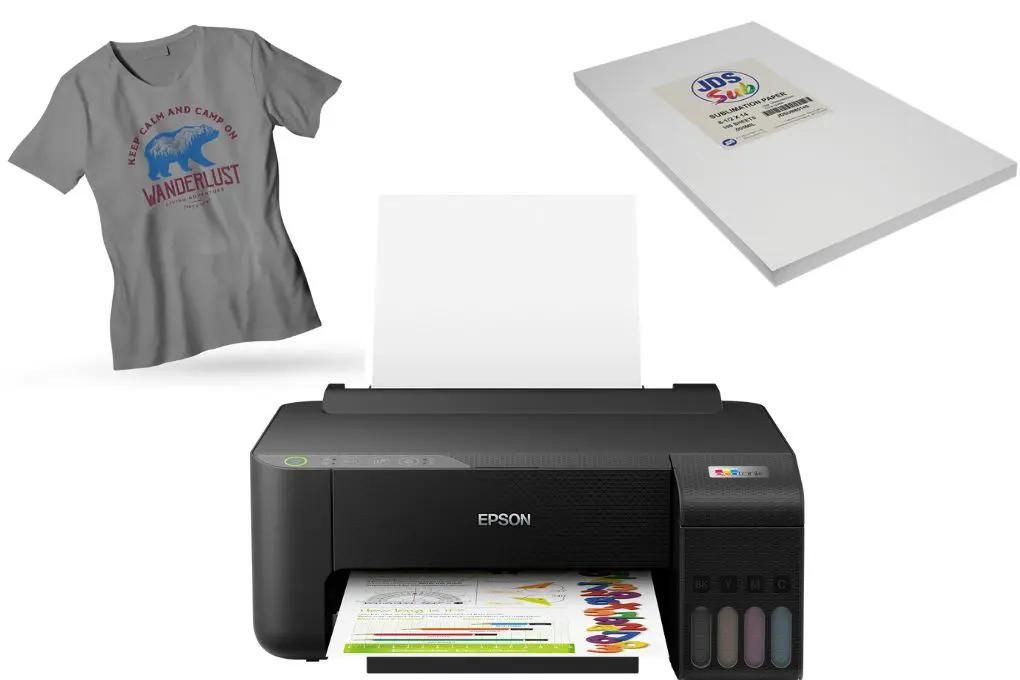
Natural fibers like wool and cotton cannot be sublimated because they do not attach to polymers found in shirts or other products. There is, fortunately, a solution to this. If you’re determined on sublimating anything which is 100% cotton, there are some methods and materials needed for that.
Some of the few ways include employing a substance known as spray bright. It has been effectively proven to work. Apply this spray by spritzing it over the cloth’s desired sublimation region, soaking the cloth, and letting it air dry.
After the cloth has dried, sublimate as normal, and behold! You may sublimate over cotton yet achieve successful outcomes. If you feel any confusion then have a look at detailed guide on sublimation on cotton.
Tips For Sublimation on Shirts
Given proper care, the shirt is likely to endure for a while! Below are some pointers to maintain it looking good:
- Before washing the shirt, flip it inside and out. This will prevent the front side of the shirt from rubbing around other objects within the washer.
- To maintain the design’s vibrancy, utilize warm or cold washes along with a light detergent.
- Avoid washing your white shirts along with many other colored shirts. Especially when it comes to new shirts, they tend to bleed extra color.
- Remove your sublimated shirts from the washer as soon as they are ready. They shouldn’t be moist and shriveled while you leave them hanging.
- After that, you should air dry them, which you may do via a rack or by using a dryer that is scheduled to air dry on medium heat.
- The approach is to avoid exposing the sublimation shirts getting excessively heated, since the ink may sublimate away. However, the dryer and washer are unlikely to reach 350°F to revive the sublimation ink, therefore you ought to be set.
- The key lesson learned is that patterns retain more of their brightness after washing when the polyester percentage is increased.
FAQs
Conclusion
Consider using sublimation printing for t-shirt designs if you’re looking for some high quality and durable t-shirts. In order to perform printing on polyester fabric, some unique dye must be heated to a sufficiently high temperature at which point it can become a gas and bind with the cloth.
You will additionally require a heat press to perform sublimation through the ink and produce the pattern on the shirt. It remains an excellent way to put beautiful designs on t-shirts, long sleeves, or jackets by using printed heat transfers, vinyl, or related techniques. However, exquisite layouts are indeed the route to take if you desire splashes of color, striking features, texture, and a cohesive sense among visuals and foundation! By far, the most popular kind of crafting method is this one!
Just about any pattern may be produced with this printing technique, even full-color pictures, yet it only functions on fabrics made of polyester or fabrics with a significant proportion of polyester fibers.
Recommended: Choosing appropriate sublimation printer for business needs, can i use any printer for sublimation, Can you use regular printer for transfer paper? how to remove sublimation ink from shirt?

I’m Derrick Flora and I am the owner of Printangles.com. I am the father of 2 angles and 1 boy and I am 37 years old. I had done Bachelor in Fashion and Textile Studies from FIT State University of New York.
It’s been 7 years since when started the sublimation business. I sublimated mugs, t-shirts, canvas, and many more. And we have analyzed some things that beginners don’t apply the actual strategies to complete the project. And those strategies are making your sublimation better onto the material. What do beginners do, they just buy the sublimation printer and the heat press without knowing about them.

